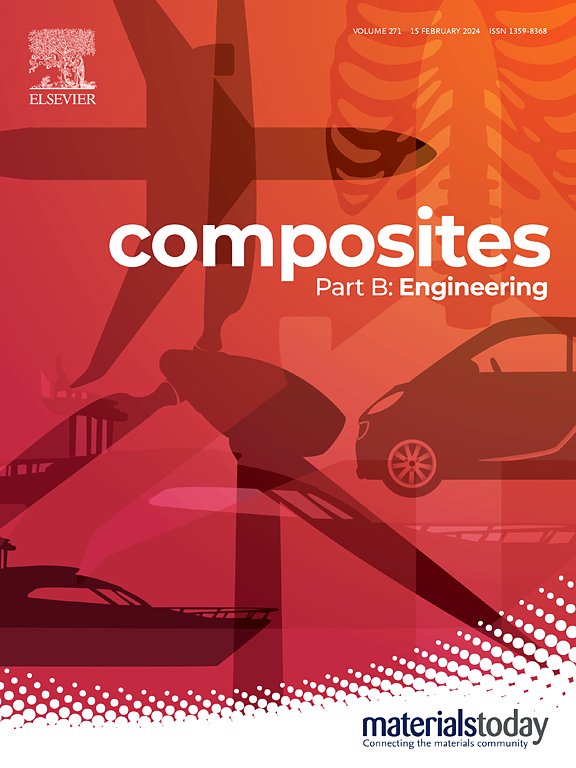Thin-shell thermoplastic composites with tunable out-of-plane properties: The interplay of layer thickness and cooling rate
IF 12.7
1区 材料科学
Q1 ENGINEERING, MULTIDISCIPLINARY
引用次数: 0
Abstract
This study explores how layer thickness and cooling rate influence crystallinity and flexural properties in cross-ply carbon fiber-reinforced polyamide 6 thin-shell composites ( total thickness). By varying layer thickness and cooling rate during consolidation, the matrix microstructure and resulting flexural behavior were significantly affected. Reduced layer thickness and increased cooling rate lowered crystallinity due to restricted chain migration, while thinner layers also decreased stiffness per classical lamination theory. This enables tailoring of the strength/stiffness ratio. Notably, a thin-layer laminate () achieved a similar strength to the thick-layer composite () but exhibited 40% enhanced flexibility, 35% higher failure onset strain, and 20% improved damage tolerance. This highlights the enhanced tunability for thin-ply thermoplastic composites, surpassing the limitations of thermoset and conventional thermoplastic composites.
具有可调面外性能的薄壳热塑性复合材料:层厚和冷却速率的相互作用
研究了碳纤维增强聚酰胺6薄壳复合材料(总厚度为672μm)的结晶度和弯曲性能。在固结过程中,不同的层厚和冷却速率对基体微观组织和弯曲行为产生显著影响。减少层厚和增加冷却速度降低结晶度由于限制链迁移,而薄层也降低刚度根据经典层压理论。这使得裁剪强度/刚度比成为可能。值得注意的是,薄层复合材料(42μm)的强度与厚层复合材料(168μm)相似,但柔韧性提高了40%,失效开始应变提高了35%,损伤容限提高了20%。这突出了薄层热塑性复合材料的增强可调性,超越了热固性和传统热塑性复合材料的局限性。
本文章由计算机程序翻译,如有差异,请以英文原文为准。
求助全文
约1分钟内获得全文
求助全文
来源期刊

Composites Part B: Engineering
工程技术-材料科学:复合
CiteScore
24.40
自引率
11.50%
发文量
784
审稿时长
21 days
期刊介绍:
Composites Part B: Engineering is a journal that publishes impactful research of high quality on composite materials. This research is supported by fundamental mechanics and materials science and engineering approaches. The targeted research can cover a wide range of length scales, ranging from nano to micro and meso, and even to the full product and structure level. The journal specifically focuses on engineering applications that involve high performance composites. These applications can range from low volume and high cost to high volume and low cost composite development.
The main goal of the journal is to provide a platform for the prompt publication of original and high quality research. The emphasis is on design, development, modeling, validation, and manufacturing of engineering details and concepts. The journal welcomes both basic research papers and proposals for review articles. Authors are encouraged to address challenges across various application areas. These areas include, but are not limited to, aerospace, automotive, and other surface transportation. The journal also covers energy-related applications, with a focus on renewable energy. Other application areas include infrastructure, off-shore and maritime projects, health care technology, and recreational products.
 求助内容:
求助内容: 应助结果提醒方式:
应助结果提醒方式:


